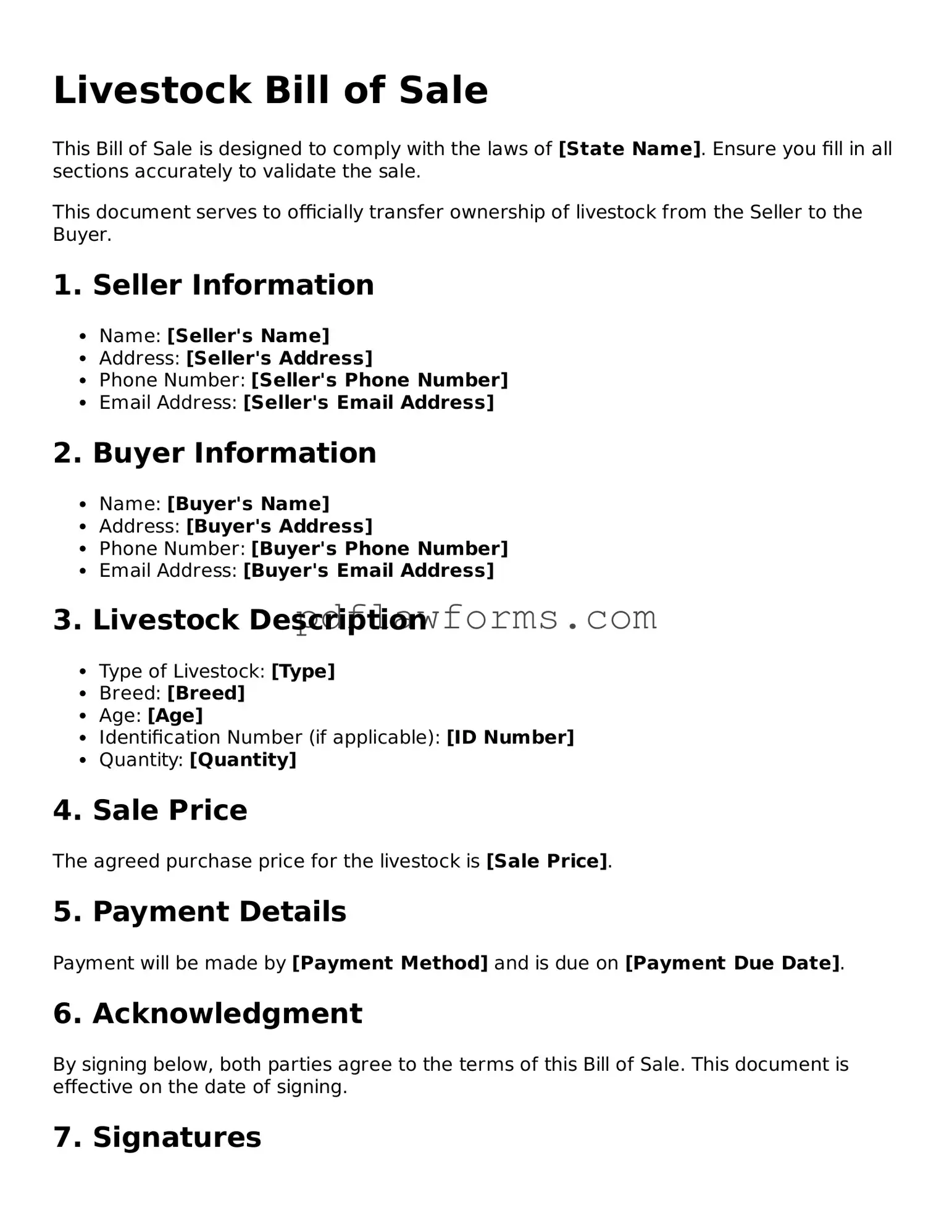Filling out a Livestock Bill of Sale form can be straightforward, but many people make common mistakes that can lead to complications later. One frequent error is failing to provide accurate identification details for the livestock. It’s crucial to include information such as breed, age, and any unique identifiers like ear tags or brands. Without this information, proving ownership can become difficult.
Another mistake is neglecting to include the sale price. This information is essential not only for the transaction itself but also for tax purposes. Leaving it blank can create confusion and may result in disputes between the buyer and seller.
People often forget to sign the document. A signature is a vital part of any bill of sale, as it indicates agreement between the parties involved. Without signatures, the document may not hold up in legal situations, leaving both parties vulnerable.
Inaccurate dates are another common issue. It's important to clearly state the date of the sale. This helps establish a timeline and can be critical if any legal questions arise later on.
Sometimes, individuals do not provide complete contact information. Including full names, addresses, and phone numbers for both the buyer and seller is essential. This ensures that both parties can be reached easily if any issues come up after the sale.
Another mistake is not keeping copies of the completed form. Both the buyer and seller should retain a copy for their records. This can serve as proof of the transaction and can be invaluable in case of disputes.
People may also overlook the importance of including any warranties or guarantees. If the seller is offering any assurances about the livestock’s health or condition, these should be clearly stated in the bill of sale to avoid misunderstandings.
Finally, failing to check for local laws and regulations can lead to problems. Different states may have specific requirements for livestock sales. It’s important to be aware of these to ensure compliance and avoid potential legal issues.
